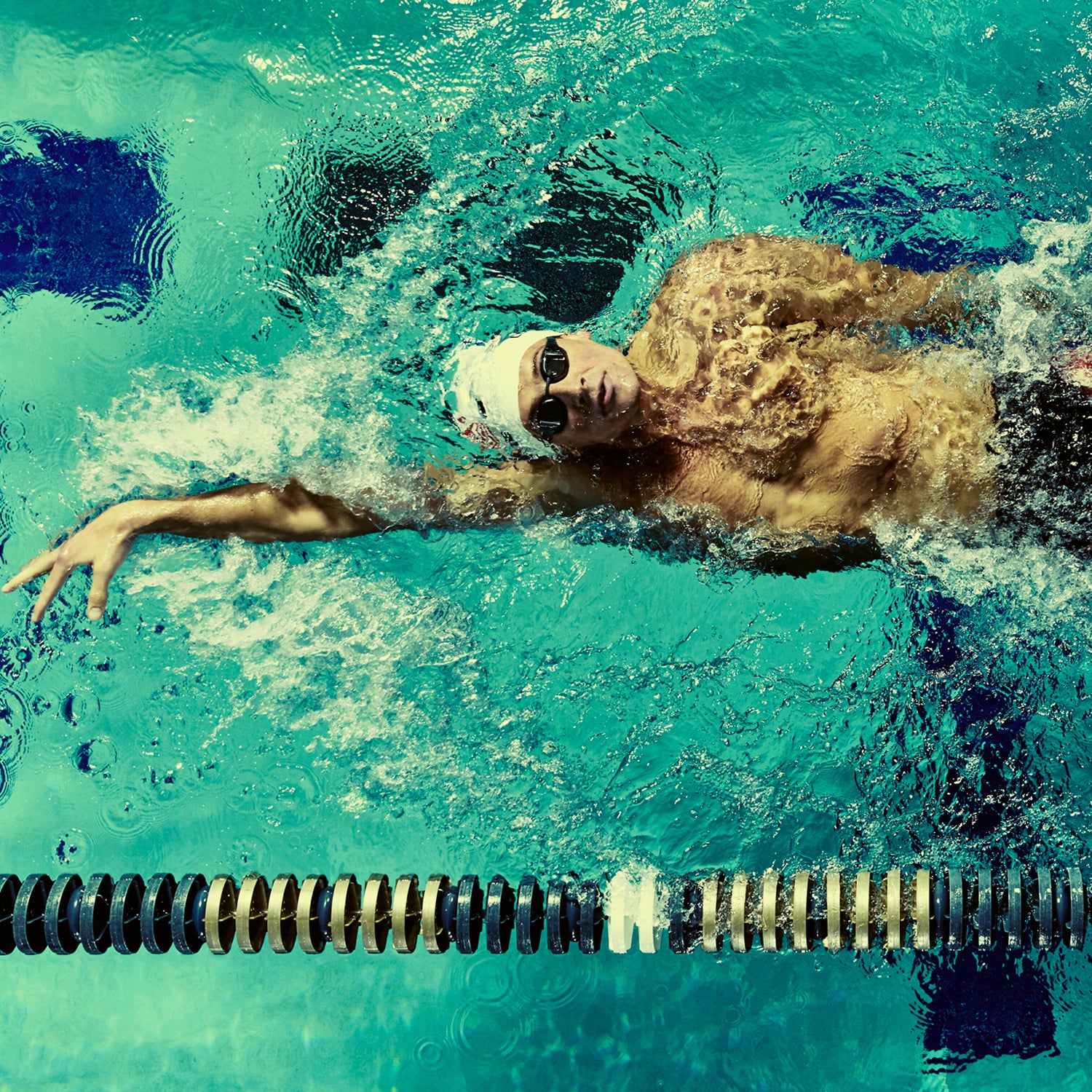The Olympics get a bad rap. The bidding process is rife with corruption. They're┬áinsanely expensive to put on. Venues seem to always be completed at the very last minute. And BrazilÔÇöwith non-stop talk of┬áZika┬áand violence and polluted watersÔÇöcould be the easiest target of them all.
And yet, when the Games actually begin, we will forget all of that. Why? It's hard to ignore the splendor of watching the world's top athletes perform at their peak.
It is our quadrennial reminder that humans are capable of lifting 500 pounds; that there are people so talented that they can dive 32.8 feet into a pool of water while performing a dazzling series of spins and flips; that dear God,┬áUsain┬áBolt is fast.╠ř
It helps that America will win many medals. We have the top coaches, employing the best training plans. We have the greatest technology on the planet. We have calculated every milligram of carbohydrates and sodium in our pre-performance meals. And, most important of all, we have the best athletesÔÇömen and women who have spent years eking out every last bit of strength and grace from their bodies in order to, someday, stand on top of the podium. This is why we watch: to be in awe. And this is what will amaze us during the 2016 Games. ┬á
Ryan Lochte Will Not Be Defeated
The late-night punch line is getting older, and some say slower, but he has a habit of piling up medals anyway
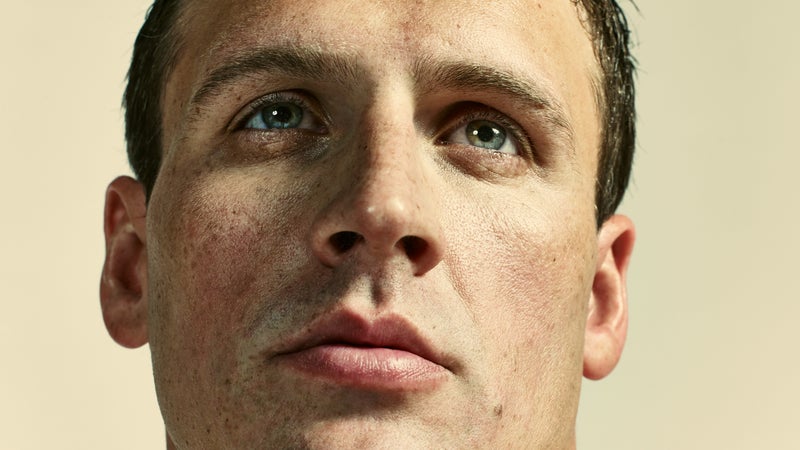
Start with this: in 2008, when Ryan Lochte competed in the Summer Games in Beijing, he took his meals at the McDonaldÔÇÖs in the Olympic Village. ÔÇťBreakfast, lunch, and dinner,ÔÇŁ he later told ESPN, explaining simply: ÔÇťI knew what I was getting.ÔÇŁ In so doing, he took a bad habit of American culture and made it a discipline, creating for himself a training table of the familiar. He super-sized. Sadly American. Then he won four medalsÔÇötwo of them goldÔÇöand set a pair of world records. Very American. Read More.
Catamarans Are Back in the Games
And theyÔÇÖre faster than ever before
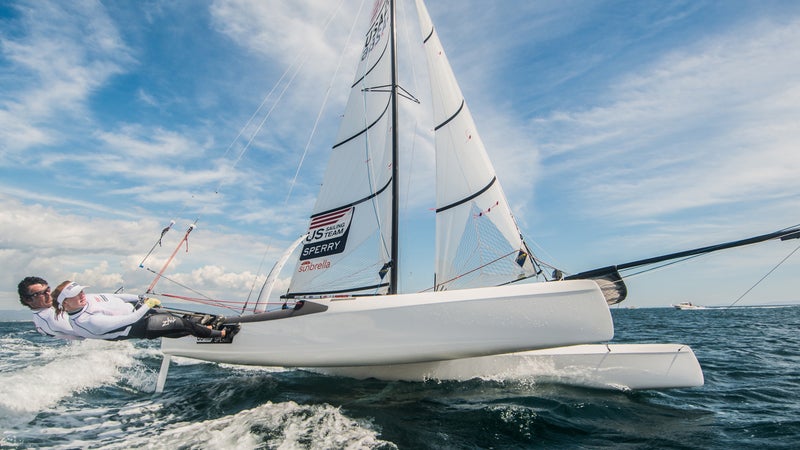
This year, Olympic organizers will introduce an ultrafast catamaran in the mixed multi-hull sailing category, one of ten classes in which sailors will compete. Like the bigger catamarans that race in the AmericaÔÇÖs Cup, the Nacra 17 employs curved daggerboards, or foils. They enable 30-mile-per-hour speeds and make the 17-foot boats appear to be flying. ÔÇťIf the previous catamarans were Indy cars, these are like Formula One,ÔÇŁ says 40-year-old U.S. helmsman Bora Gulari, who lives in Detroit.╠řRead More.
At Least They've Got T.B. Under Control
What might ruin the Olympics
Zika
The mosquito virus can cause fever and infant microcephaly. In June, American cyclist Tejay van ┬şGarderen withdrew to avoid it. Thankfully, mosquito populations are low in August.╠ř
Threat Level: 6/10
Dirty Water
Last year dangerous levels of fecal matter were found in the water that will host sailing, rowing, and long-┬şdistance swimming. Athletes who ingest it could have a 99 percent risk of getting sick.
Threat Level: 9/10╠ř
Armed Robbery
Gangs of thieves are known to use ÔÇťquicknappingÔÇŁÔÇöforcing ATM users at gunpoint to drain their ┬şaccountsÔÇöon tourists. To combat the danger, expect an increased police presence.
Threat Level: 4/10
Rioting
Brazil is in the midst of its worst recession in 100 years, the unemployment rate is approaching 11 percent, and massive protests have rocked most major cities.
Threat Level: 8/10
How to Age Gracefully (And Still Kick Ass)
Natalie Coughlin is focusing on the little things

At the London Games in 2012, Natalie Coughlin won a bronze medal in the 4×100 relay. The third-place finish brought her Olympic medal count to 12 (three of them gold), tying her with swimmers Jenny Thompson and Dara Torres for the most medals won by an American woman. The Rio Games will be the 33-year-oldÔÇÖs fourth Olympics. Read More.
The Gold-Medal Diet
It's all about experience, eating slow, and going beyond the comfort food

For┬áOlympians, a winning meal comes down to a classic breakfast, a lot of calories, and quality protein. Read More.╠ř
Sport or Not a Sport?
With some of the lesser known Olympic events, it's a tough call.╠ř
Dressage
What it is: Prancing around on a horse while wearing a top hat.
Physical Challenge:┬áMaintaining thighs of steel to control the beast.╠ř
│Ň▒░¨╗ňż▒│Ž│┘:╠řSport!
Trampoline Gymnastics
What it is: Executing aerial tricks while bouncing on a tarp stretched between springs
Physical Challenge: Not yelling┬á“░┬│ˇ▒▒!”╠řwith each jump.
Verdict: Not a sport!
Canoe Sprint
What it is: Drag-racing on water for 200, 500, or 1,000 meters.
Physical Challenge: Have you seen how straight these paddlers track?
Verdict: Sport!
Gwen Jorgensen Looks for the First U.S. Triathlon Win in Rio
Is the worldÔÇÖs most dominant triathlete primed for gold?
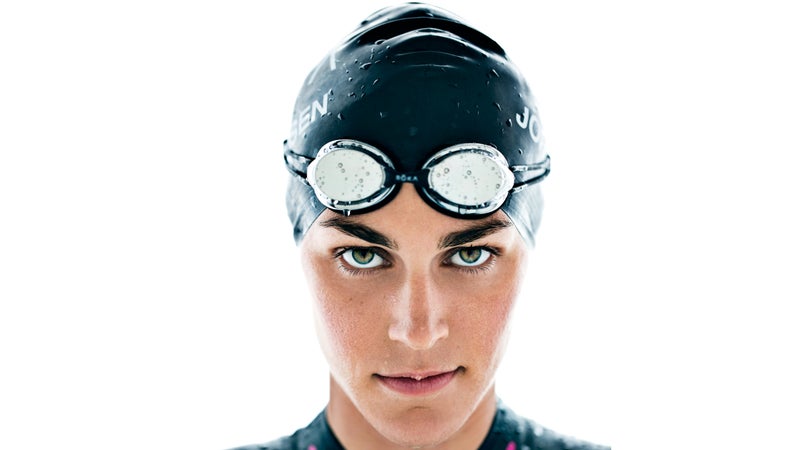
When Jorgensen decided to become a triathlete at the age of 23, she had never even been on a road bike. Still, while in college at the University of Wisconsin-Madison, she made the swim, track, and cross-country teams as a walk-on and became an all-American runner.╠řJorgensen smoothed out her ability to unclip from her pedals, stopped falling over at stop signs, and, she says, ÔÇťrealized I had potential.ÔÇŁ Read More.
How BMW Built the World's Fastest Wheelchair
A German automakerÔÇÖs California design lab is cooking up custom chariots for American ParalympiansÔÇő
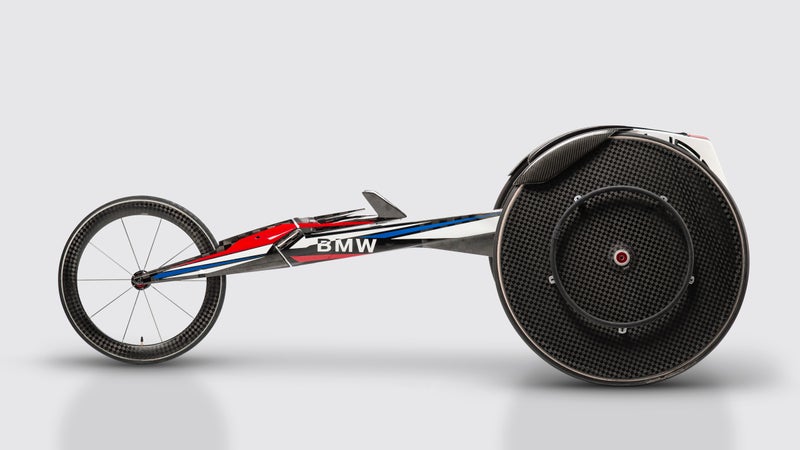
Six athletes on the USA Track and Field team will compete at the Paralympics this September in custom carbon-fiber wheelchairs dreamed up by Designworks, BMWÔÇÖs Southern Cali┬şfornia design firm. The team has worked with Olympians before; they built sensors for long jumpers to check their form and delivered the lightning-fast two-man bobsleds that enabled the United States to break a six-decade medal drought in Sochi. But this is their first time tackling a wheeled rig. To do so, they rethought it from front to back. ÔÇťThe ideal is that the wheelchair disappears,ÔÇŁ says asso┬şciate ┬şdirector Brad Cracchiola, ÔÇťand itÔÇÖs just the athlete.ÔÇŁ Read More.
This Man Will Make America Fall in Love with Rugby
The sport will return to the 2016 Olympics after nearly a century, and Carlin Isles is the player we can't wait to watch
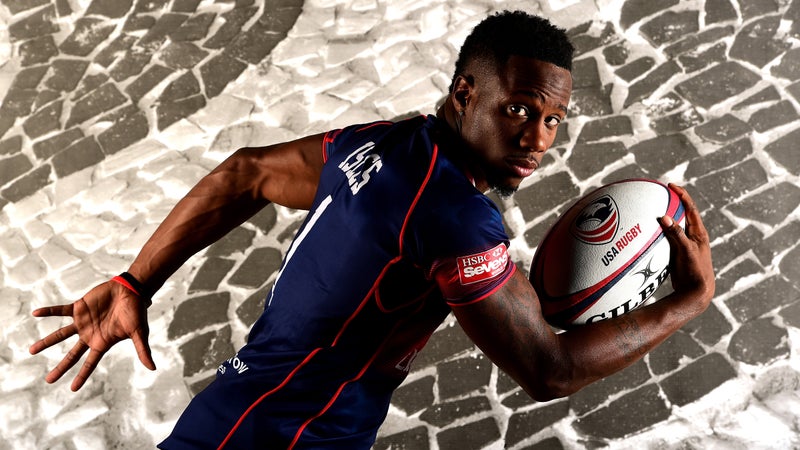
In 2012, Carlin Isles wanted to sprint in the London Olympics. He knew he was fastÔÇöhe ran the 100 meters in 10.13 seconds at a race in Austin, Texas, that yearÔÇöbut he thought he could go faster. He was researching training techniques on the Internet when he found rugby, a sport he had never seen, much less played. ÔÇťThe only thing I knew is that they didnÔÇÖt have any pads and people get their teeth knocked out,ÔÇŁ he says.;
Then 22, Isles was no stranger to discomfort. As a boy, he shuffled between foster homes after his mother went to prison. At times he was so hungry he ate dog food. He got into fistfights and ran away. That all changed when Charles and Starlett Isles, both property managers in Massillon, Ohio, adopted him at age eight and helped him direct his energy toward sports. Read More.
A Brief History of Treason
Not every American in Rio will compete for the U.S. Oregon distance runner Alexi Pappas, for example, will try to win for Greece, taking advantage of an IOC rule that requires only that athletes be a citizen of the country they representÔÇöthey donÔÇÖt have to live or train there. In some cases, it offers a better chance to qualify. But often itÔÇÖs becauseÔÇöwell, itÔÇÖs complicated.╠ř
2002: Kristin Fraser, 36, ice dancer
Born in: Palo Alto, California
Competed for: Azerbaijan
Excuse: Her favorite dance partner was on the national team.
2014: Vic Wild, 29, slalom snowboarder
Born in: White Salmon, ┬şWashington
Competed for: Russia
Excuse: It ┬şoffered more funding, so┬áhe married his Russian girlfriend.
2016:┬áAisha Praught, 26, steeple┬şchase runner
Born in: Marshfield, Wisconsin
Competing for: Jamaica
Excuse: She reconnected with her Jamaican father.
Welcome to Brazil's Garden of the Gods
A guide to the places where glory will be wonÔÇöand where the victors will live, sleep, and train

It might not be as storied as Rio ÔÇÖhoods like Copacabana and Ipanema, but Barra da Tijuca is one of the cityÔÇÖs swankiest. ItÔÇÖs being called the Heart of the Games by organizers, because itÔÇÖs home to the Olympic Park. Read More.╠ř
New American Heroes
Young Athletes to Watch
Evan Jager and Emma Coburn, Steeplechase
Ever since Jager, a former cross-country runner, switched to the 3,000-meter steeplechase in 2012, he has been unstoppable. In 2015, he shocked the world by setting a new national record ┬şdespite stumbling over a barrier in the final 100 meters. HeÔÇÖs not the only one bringing American prestige back to steeplechase. Coburn has been the U.S. national 3,000-meter champion four years in a rowÔÇöand took fifth at last yearÔÇÖs World Championships in Beijing.╠ř
Katie Ledecky, Swimming 
Ledecky won her first gold medal┬áin 2012ÔÇöwhen she was 15. At the 2015 FINA World Championships┬áin Kazan, Russia, she became┬áthe first swimmer ever to win the 200-, 400-, 800-, and 1,500-┬şmeter indi┬şvidual freestyle in a single world meet. ÔÇťI donÔÇÖt know if she has any weaknesses,ÔÇŁ Olympic gold medalist Missy Franklin recently told The Washington Post.
Coryn Rivera, Cycling
The top sprinter for the United┬şHealthcare womenÔÇÖs team has 71 national titles across four disciplines, plus a win at the 2015 WomenÔÇÖs USA Pro Challenge, a stage race in Colorado. Since graduating from IndianaÔÇÖs Marian University last winter, ┬şRivera has quickly become one of the best cyclists in the country.╠ř
Trayvon Bromell, Track and Field
The Baylor University junior is the only runner ever to break the ten-second barrier in the 100 meters before turning 20. Still, his 9.99 time in high school wasnÔÇÖt quite as fast as the 9.97 he ran at the 2014 NCAA Outdoor Championship. In 2015, he tied for third at the World Championships in Beijing, sharing the podium with Jamaican Usain Bolt and fellow American Justin Gatlin.╠ř
Matt Centrowitz, Track and Field
Centrowitz has already made running history: he was on the University of Oregon one-mile-relay team that broke the NCAA record in 2009. After beating out two-time Olympic medalist Bernard Lagat to win the Fifth Avenue Mile in New York City, Centro won gold in the 1,500 meters at this yearÔÇÖs World Indoor Championships. He follows in the steps of his dad, who competed in the 1976 Games.
JÔÇÖden Cox,┬áFreestyle wrestling
This spring the 21-year-old from the University of Missouri capped his second NCAA championship by winning the U.S. Olympic Team Trials in Iowa City. Two weeks later, Cox headed to Mongolia for the Olympic qualifying tournament in Ulan Bator, where he again took gold.╠ř
Hell on Two Wheels
Howard Grotts is the best American mountain biker in a generation. But he's had to overcome heartbreaking tragedy to reach his pinnacle.
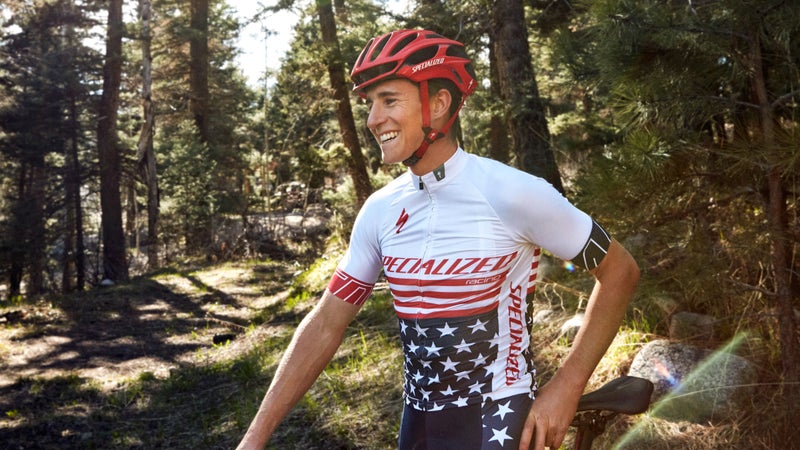
Midway through last summerÔÇÖs 24-mile U.S. national championship cross-country mountain-bike race at Mammoth Mountain, California, Howard Grotts, 23, tagged a rock. Air hissed out of his rear tire. He considered changing the wheel but instead ducked into the pits for a shot of CO2, gambling that the pressure would hold through the race. When he started again 30 seconds later, heÔÇÖd dropped from second place to sixth.
Then Grotts showed why heÔÇÖs AmericaÔÇÖs best hope to someday win an Olympic mountain-biking medal. He accelerated so explosively that another racer said it felt like Grotts was moving twice as fast as everyone else. The fact that he accomplished this at 8,500 feet, where the thin air makes decisive bursts hard to produce, only amplified the shock among competitors and spectators. ÔÇťEveryone kind of gasped at his speed,ÔÇŁ recalls Ned Overend, arguably the greatest mountain-bike racer in U.S. history. Read More.


